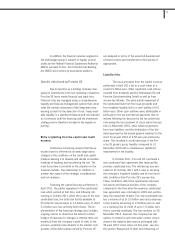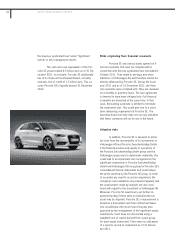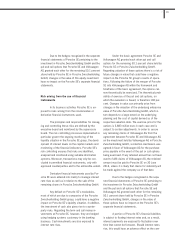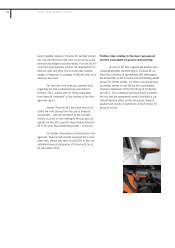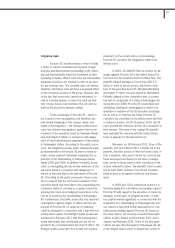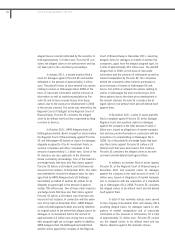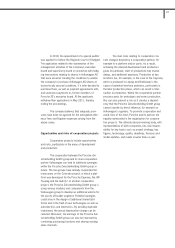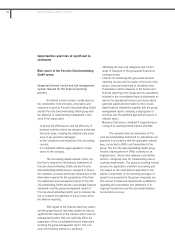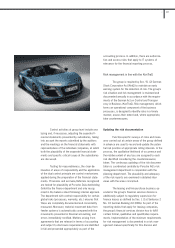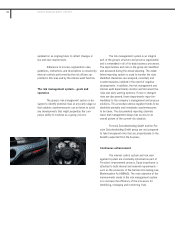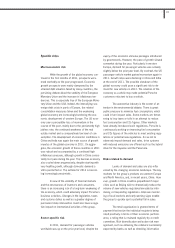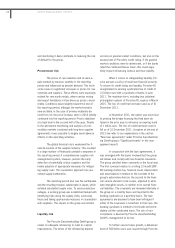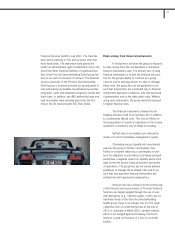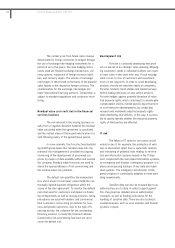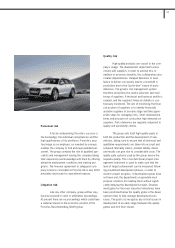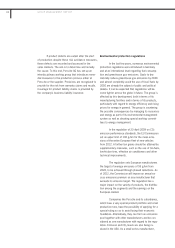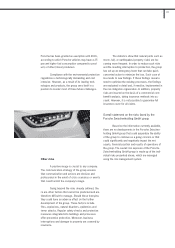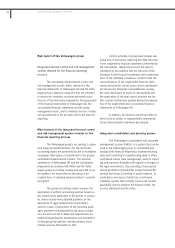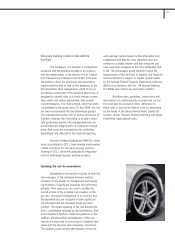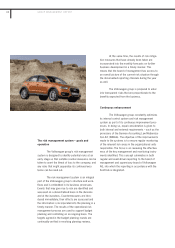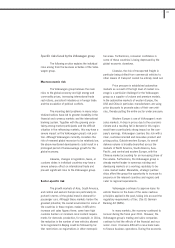Porsche 2011 Annual Report Download - page 109
Download and view the complete annual report
Please find page 109 of the 2011 Porsche annual report below. You can navigate through the pages in the report by either clicking on the pages listed below, or by using the keyword search tool below to find specific information within the annual report.
Specific risks
Macroeconomic risk
While the growth of the global economy con-
tinued in the first months of 2011, prospects wors-
ened markedly as the year progressed. Economic
growth prospects were mainly dampened by the
strained debt situation faced by many countries, the
persisting debate about the stability of the European
Monetary Union and the increase in inflationary ten-
dencies. This is especially true of the European Mone-
tary Union and the USA. Indeed, the intensifying sov-
ereign debt crisis in parts of Europe, the related
consolidation measures taken and the weakening
global economy are increasingly burdening the eco-
nomic development of western Europe. The US econ-
omy saw a perceptible loss of momentum in the
course of the year, mainly due to the persistently high
jobless rate, the continued weakness of the real
estate market and a comparatively low level of con-
sumption. The development of economic conditions in
China and India was again the main source of growth
impetus of the global economy in 2011. On aggre-
gate, the economic growth of these countries in 2011
was robust and accompanied by a continued high
inflationary pressure, although growth in China consis-
tently lost pace during the year. The German economy
also cooled down progressively, despite starting with
very healthy growth, although domestic demand is
still a pivotal factor. The outlook for 2012 is becom-
ing increasingly pessimistic.
In view of the volatility of financial markets
and the nervousness of investors and consumers,
there is an increasing risk of a long-term weakening of
the economy, which could adversely impact Porsche's
business activities. Changes in the legislation, taxes
and customs duties as well as a greater degree of
permanent state intervention could also have a nega-
tive impact on international activities of the group.
Sector-specific risk
In 2011, demand for passenger vehicles
worldwide was up on the prior-year level, despite the
expiry of the economic stimulus packages introduced
by governments. However, the pace of growth slowed
somewhat during the year. Particularly in western
Europe, demand for passenger vehicles was actually
slightly below the prior-year level. By contrast, the US
passenger vehicle market gained momentum again in
2011. Growth rates were declining in China and India
at the end of 2011. The possible slowdown of the
global economy could pose a significant risk to de-
mand for new vehicles in 2012. The situation of the
economy as a whole may make potential Porsche
customers reluctant to buy a vehicle.
The automotive industry is the center of at-
tention in the environmental debate. There is great
public pressure to minimize fuel consumption, which
could in turn impact sales. Some markets are threat-
ening to levy taxes or tolls in an attempt to reduce
fuel consumption and CO2 figures. Other markets
have already introduced such regulations. Porsche is
continuously working on improving fuel consumption
and CO2 figures of the vehicles to meet existing regu-
lations or potential new regulations. So as not to
adversely impact demand and sales, drive systems
with reduced emissions are offered such as the hybrid
drive for the Cayenne and the Panamera.
Risks related to demand
Levels of demand and sales are also influ-
enced by the changing economic landscape. The key
markets for the group’s products are western Europe
and North America, and, in recent years, China. How-
ever, growth in China could be jeopardized if major
cities such as Beijing wish to dramatically reduce the
volume of new vehicles registered annually by intro-
ducing corresponding regulations. Intensive monitor-
ing of local markets and early warning signs enable
the group to quickly spot a potential fall in sales.
The retail organization is granted terms of
payment that involve the individual recipients being
rated positively in terms of their economic perform-
ance, a rating that is reviewed regularly by a credit
committee. Risk diversification and active risk man-
agement, such as obtaining the collateral customarily
expected by banks as well as obtaining information
109
2


